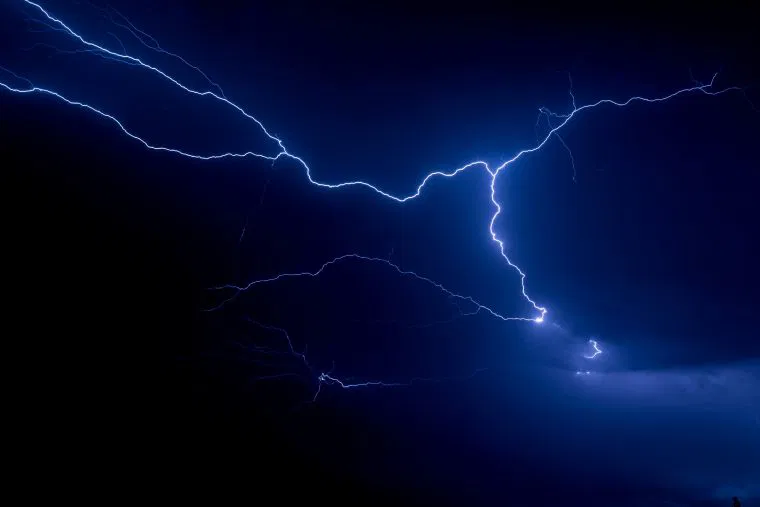
Scientists Decode “Perplexing Mystery” of How X-rays, Electric Fields, and Electron Avalanches Create Powerful Lightning Strikes
How did your country report this? Share your view in the comments.
Diverging Reports Breakdown
Scientists Decode “Perplexing Mystery” of How X-rays, Electric Fields, and Electron Avalanches Create Powerful Lightning Strikes
Penn State University scientists exploring the longstanding mystery of how atmospheric dynamics within thunderclouds create powerful lightning strikes. Scientists believe they have identified a perfect storm of X-rays, electric fields, and electron avalanches that eventually gives birth to a lightning bolt. Researchers have long understood the basic science of lightning strikes, the Penn St. team said this is the first study of the “perplexing mystery” to reveal the powerful chain reaction that triggers the event while also accounting for lightning-generating thunderstorms.“Our findings provide the first precise, quantitative explanation for how lightning initiates in nature,” explained Victor Pasko, a professor of electrical engineering in the Penn State School of School of Electrical Engineering and Computer Science and the study’s leader. The study was published in the Journal of Geophysical Research Research.
While researchers have long understood the basic science of lightning strikes, the Penn St. team said this is the first study of the “perplexing mystery” to reveal the powerful chain reaction that triggers the event while also accounting for gamma ray bursts and light flashes that often accompany lightning-generating thunderstorms.
“Our findings provide the first precise, quantitative explanation for how lightning initiates in nature,” explained Victor Pasko, a professor of electrical engineering in the Penn State School of Electrical Engineering and Computer Science and the study’s leader. “It connects the dots between X-rays, electric fields, and the physics of electron avalanches.”
To decode lightning strikes, Pasko and colleagues first employed computer models designed to simulate photoelectric phenomena within the Earth’s atmosphere. The team’s models approximated the electrical environment preceding lightning strikes by simulating the seeding of the atmosphere with “relativistic energy” electrons generated by cosmic rays coming from outer space. According to the study authors, these electrons multiply within the electric fields of thunderstorms by colliding with molecules, such as nitrogen and oxygen, present within storm clouds. After these collisions accumulate enough energy, the clouds can emit brief, high-energy photon bursts detectable by ground-based sensors.
Known as a gamma ray flash, the team says this high-energy event preceding lightning strikes “comprises the invisible, naturally occurring bursts of X-rays and accompanying radio emissions” often seen during lightning strikes. By using advanced simulation models to approximate the conditions observed in the field, Pasko said his team was able to offer a previously unavailable “complete explanation” for the detection of X-rays and radio emissions within thunderclouds.
“We demonstrated how electrons, accelerated by strong electric fields in thunderclouds, produce X-rays as they collide with air molecules like nitrogen and oxygen, and create an avalanche of electrons that produce high-energy photons that initiate lightning,” the professor explained.
After completing their computer model, electrical engineering doctoral student Zaid Pervez merged it with field observations made by previous study efforts. By incorporating real-world sensor data captured by ground-based sensors, satellites, and high-altitude spy planes, the team created the most accurate and detailed model of the conditions within thunderclouds. Pervez said this model explained how these photoelectric events occur, the thundercloud conditions necessary to initiate an electron cascade, and the cause of the “wide variety” of radio signals often observed in clouds prior to a lightning strike.
To confirm their findings, Pervez compared them with previous modeling, observational studies, and “my own work” on intercloud discharges, a type of compact lightning that usually occurs in smaller, localized regions within thunderclouds. Along with confirming their findings on the mysterious origin of lightning strikes, the team noted that this analysis also accounted for the terrestrial gamma-ray flashes that can occur during lightning storms, whether or not accompanied by radio bursts or flashes of light.
“In our modeling, the high-energy X-rays produced by relativistic electron avalanches generate new seed electrons driven by the photoelectric effect in air, rapidly amplifying these avalanches,” Pasko said. “In addition to being produced in very compact volumes, this runaway chain reaction can occur with highly variable strength, often leading to detectable levels of X-rays, while accompanied by very weak optical and radio emissions.”
The researcher said this chain reaction likely explains why gamma-ray flashes can “emerge from source regions that appear optically dim and radio silent,” during a lightning storm.
The study “Photoelectric Effect in Air Explains Lightning Initiation and Terrestrial Gamma Ray Flashes” was published in the Journal of Geophysical Research.
